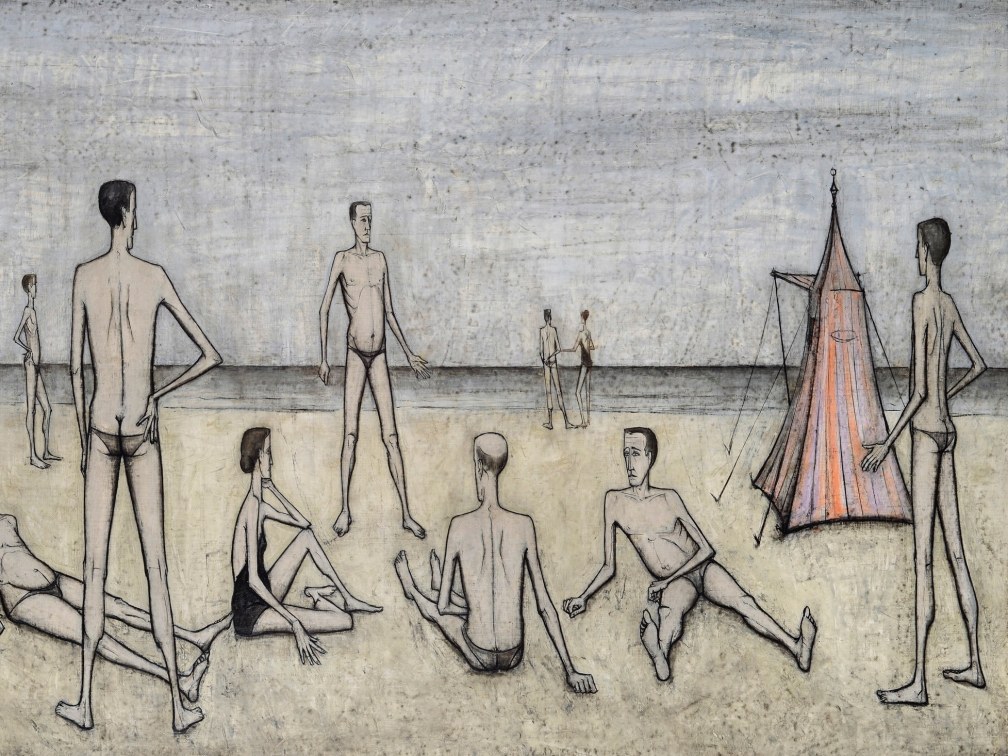
Roy De Forest
Untitled, 1962
Mixed media on paper, double sided
23 x 30 in
58.4 x 76.2 cm
$28,000
Roy De Forest’s freewheeling vision, treasured for its combination of dots, dogs, and fantastical voyages, made him a pillar of Northern California’s artistic community for more than fifty years. Born in 1930 to migrant farmers in North Platte, Nebraska, De Forest and his family fled the dust bowl for Washington State, where he grew up on the family farm in the lush Yakima Valley, surrounded by dogs and farm animals. In 1950, De Forest received a scholarship to the California School of Fine Arts (now San Francisco Art Institute), where he studied under Elmer Bischoff and Hassel Smith, artists who encouraged De Forest to challenge the heroism of Abstract Expressionism. De Forest quickly became involved with San Francisco’s nascent Beat community, and supplemented his formal education with seminars, conversations, and exhibitions at venues like the King Ubu and East & West galleries, where he became close with artists Joan Brown, Manuel Neri, Jay DeFeo, Wally Hedrick, Jess, and Deborah Remington, among others. An active participant in the boisterous atmosphere fostered by his teachers and peers, De Forest “developed a kind of opposition to [...] quasi-religious attitudes toward painting” and became “skeptical about all the Romanticism and especially the overt conversions people were supposed to go through.” His earliest works feature large skeins of bright color, which he paired with fanciful titles that undercut the heady moralism and spiritual excesses of Abstract Expressionism.
Venus Over Manhattan recently organized a major solo presentation of De Forest's work, which represented the largest exhibition of his work in New York since the Whitney Museum of American Art mounted a retrospective in 1975. The gallery also launched an online viewing room dedicated to De Forest's work, which Roberta Smith reviewed in the New York Times: "This Bay Area artist’s enduring, multifaceted achievement deserves more respect from New York than it has garnered thus far."

Untitled, is a rare double sided drawing from 1962. The recto features a dense network of colorful forms that circulate around a multi-limbed black shape at center. The black form is reminiscent of what De Forest and his family called a "pelt": a shape in the drawing that resembles an animal skin that retains its fur. The shapes circulating around the pelt are signature De Forest, referencing organic structures, cellular anatomies, and ravishing color. The verso of the drawing features a nearly symmetrical composition, with red and green forms meeting toward the center of the page. These forms buttress a near-literal representation of a blossoming flower, rendered in black and rend. Susan Landauer, curator of De Forest's recent retrospective at the Oakland Museum of California, wrote about this drawing in Of Dogs and Other People: The Art of Roy De Forest: the drawing, “includes a lotus leaf flourish that resembles that of the columns of [a temple in San Jose that De Forest’s mother frequented].” As Gloria Marchant, the artist's widow described: "this is something I did really notice—I mean it was consistent the whole time we were married—Roy would start work, you know, after his studio was emptied out, by drawing. And there wouldn’t be, literally, like, a cartoon for a painting, or anything like that. But he—that was his idea generator, I think. I mean he would make a series of drawings, and then pretty soon he’s working on paintings."
Drawing was always a central aspect of De Forest's production. He developed a dazzling visual vocabulary through his works on paper that recalled his diverse intrerests, including natural forms like seed pods and protozoa, articles from Scientific American, and beaded tapestries from the indigenous Yakama Nation. In the years following his retrospective, drawing came to play a more central role in De Forest’s production, and he would often put aside painting for lengths of time to focus exclusively on drawing. His compositions featured ever more animated canines and figures, situated in landscapes that suggest imaginative adventure narratives.
Conversations: Roy De Forest
Conversations is an ongoing production from Venus Over Manhattan, where artists, writers, critics, academics, and familiars come together to talk about art. Each conversation is published as an audio recording made accessible the gallery’s website, and accompanied by a PDF that features a transcript of the conversation. Listen along at #ConversationsVOM.
On April 24th, 2020, Gloria Marchant and Dan Nadel spoke with Anna Furney about Roy De Forest, and the exhibition of his work on view at the gallery in New York. They discuss De Forest’s childhood in the Northwest, his lifelong obsession with dogs, and many of his earliest exhibitions.
Gloria Marchant is the widow of Roy De Forest, and oversees the Roy De Forest Estate. She joins the conversation from her home in Northern California.
Dan Nadel is Curator-at-Large at the Jan Shrem and Maria Manetti Shrem Museum of Art, at the UC Davis. He contributed an essay to the catalogue published with Venus Over Manhattan’s De Forest exhibition.
Anna Christina Furney is partner at Venus Over Manhattan. She moderated this conversation
This Bay Area artist’s enduring, multifaceted achievement deserves more respect from New York than it has garnered thus far.
